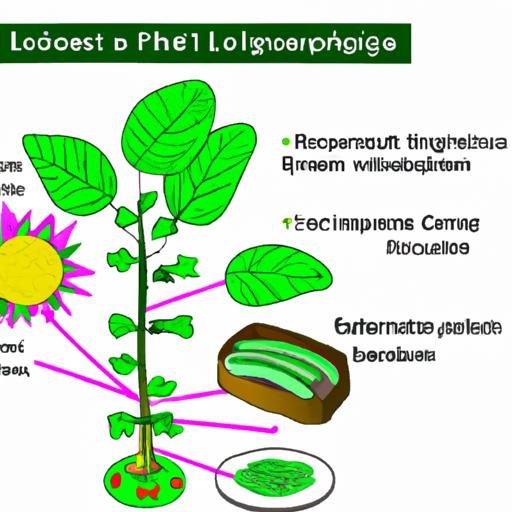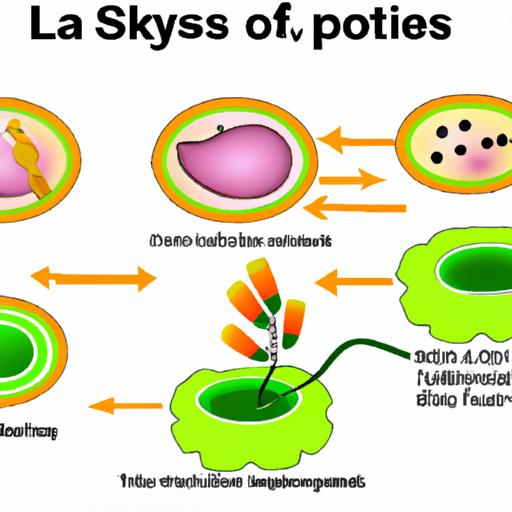Plants: they grace our surroundings with their vibrant colors, intricate structures, and the oxygen they provide. But have you ever wondered if there is more to them than meets the eye? Are plants capable of experiencing the world around them? In this article, we delve into the intriguing question: are plants sentient?
Introduction
A. Definition of Sentience
Before we embark on this exploration, let’s establish what we mean by “sentience.” Sentience refers to the capacity of an organism to perceive, experience sensations, and have consciousness. Traditionally, we associate sentience with animals, particularly those with complex nervous systems. However, as science advances, new insights challenge our understanding of consciousness.
B. Brief Overview of Plants and Their Characteristics
Plants, unlike animals, lack a centralized nervous system and do not possess brains. They may seem passive, rooted in one place, but their existence is far from static. They exhibit remarkable adaptations, growth, and responses to their environment. Through photosynthesis, they convert sunlight into energy, and their roots explore the soil for nutrients and water.
Plants communicate and interact with their surroundings in ways that often elude our perception. They emit chemical signals, engage in symbiotic relationships, and even respond to touch. But does this imply sentience? Let’s delve deeper to uncover the secrets of plant behavior and explore their sensory systems.
Stay tuned for the upcoming sections as we explore intriguing aspects such as plant behavior and responses, sensory systems, scientific studies, ethical considerations, and conclude with a nuanced perspective on the fascinating question: are plants sentient?
Plant Behavior and Responses
Plants, despite their lack of mobility and apparent passivity, possess a myriad of fascinating behaviors and responses that showcase their remarkable adaptability. Let’s delve into the intriguing world of plant behavior and explore how they interact with their environment.
A. Overview of Plant Behavior
Contrary to popular belief, plants are not just static entities rooted in the ground. They exhibit a wide range of behaviors, both visible and hidden. For instance, plants can orient their leaves towards the sun to maximize photosynthesis, a phenomenon known as phototropism. They also respond to gravity through geotropism, allowing their roots to grow downward and their stems to grow upward.
B. Discussion on How Plants Respond to Stimuli
Plants possess sophisticated mechanisms that enable them to respond to various stimulOne notable example is thigmotropism, where plants respond to touch by altering their growth patterns. You may have observed how a plant’s tendrils wrap around a support structure, enabling it to climb and thrive. This response showcases their ability to sense and adapt to their surroundings.
Additionally, plants exhibit chemotropism, a response to chemical cues. They can release volatile compounds to attract pollinators or repel herbivores. These chemical signals not only provide protection but also facilitate interaction with other organisms in their ecosystem.
C. Examples of Plant Communication and Interaction
Plants possess an intricate network of communication and interaction, often imperceptible to the human eye. Through the release of chemical signals, they can warn neighboring plants of imminent threats, such as insect attacks or herbivory. This phenomenon, known as allelopathy, highlights their ability to collaborate and protect each other.
Furthermore, plants engage in mutually beneficial relationships with microorganisms. For instance, mycorrhizal fungi form symbiotic associations with plant roots, aiding in nutrient absorption. This symbiosis exemplifies the interconnectedness of plant life and showcases their ability to establish complex relationships.
In the next section, we will explore the sensory systems of plants, shedding light on how they perceive and respond to their environment. Prepare to be amazed by the intricacies of their sensory mechanisms!
Plant Sensory Systems
Plants may not possess eyes, ears, or a nervous system like animals do, but they have evolved intricate sensory mechanisms that allow them to perceive and respond to their environment. Let’s delve into the fascinating world of plant sensory systems.
A. Overview of Plant Sensory Mechanisms
Plants have an array of sensory mechanisms that enable them to sense and react to various stimulOne crucial mechanism is photoreception, where plants detect light and use it for photosynthesis and to regulate their growth. Photoreceptors, such as phytochromes and cryptochromes, allow plants to sense different wavelengths of light and adjust their physiological processes accordingly.
Another essential sensory mechanism is chemoreception. Plants release chemical signals called volatile organic compounds (VOCs) that communicate with other plants, insects, and even animals. These compounds play a vital role in defense mechanisms, attracting pollinators, and signaling stress responses.
B. Explanation of How Plants Perceive and Respond to Their Environment
Plants possess a remarkable ability called tropism, which refers to their growth response towards or away from specific stimulFor instance, phototropism involves plants bending or growing towards a light source to maximize their exposure to sunlight. Geotropism, on the other hand, is the response to gravity, where roots grow downwards while stems grow upwards.
Plants also respond to touch through a phenomenon known as thigmotropism. When a plant comes into contact with an object, it triggers a response that can result in curling, coiling, or changes in growth patterns. This sensitivity to touch is particularly evident in climbing plants, which rely on physical support to navigate their environment.
C. Examples of Plant Sensory Systems in Action
One fascinating example of plant sensory systems is the phenomenon of allelopathy, where plants release chemicals to inhibit the growth of neighboring plants. This mechanism allows them to compete for resources and gain a competitive advantage in their ecosystem.
Another extraordinary example is the ability of plants to respond to sound vibrations. Recent studies have shown that certain plants can perceive sound waves and adjust their growth patterns accordingly. This discovery challenges our understanding of plant perception and raises intriguing questions about the extent of their sensory abilities.
Through their sensory mechanisms, plants demonstrate a level of awareness and responsiveness that goes beyond what we might expect. As we continue our exploration, we will delve into scientific studies and evidence regarding plant sentience to further unravel the mysteries of their consciousness.
Scientific Studies and Evidence
When it comes to understanding plant sentience, scientific studies play a crucial role in shedding light on this enigmatic topic. Let’s delve into the realm of research and explore the evidence that has been put forth.
A. Examination of Scientific Research on Plant Sentience
Researchers have conducted numerous studies to unravel the mysteries surrounding plant consciousness. Through rigorous experimentation and observation, scientists have discovered compelling evidence that challenges our perception of plant life. For instance, studies have shown that plants possess the ability to respond to stimuli in their environment, such as changes in light, temperature, and even sound vibrations. These responses indicate a level of awareness and adaptability that goes beyond mere biological processes.
B. Discussion on Studies Suggesting Plant Consciousness
Several groundbreaking studies have suggested that plants may indeed possess a form of consciousness. One such study, conducted by researchers at the University of Western Australia, demonstrated that plants can exhibit learning behavior. In the experiment, the researchers trained pea plants to associate a particular sound with the presence of a light source. Remarkably, the plants soon began to orient themselves towards the light source when exposed to the sound, even in the absence of the actual light. This finding raises intriguing questions about the cognitive abilities of plants.
Additionally, studies have revealed that plants can communicate with each other and even with other organisms. They emit chemical signals, known as volatile organic compounds, to warn neighboring plants about impending threats, such as insect attacks. This communication network highlights a level of interconnectedness and coordination that is indicative of a sophisticated system of awareness and response.
C. Counterarguments Against Plant Sentience
While some scientific studies suggest plant consciousness, there are counterarguments that challenge this notion. Critics argue that the responses exhibited by plants can be explained purely in terms of biochemical and genetic processes, without the need for consciousness. They attribute plant behaviors to complex but deterministic mechanisms rather than conscious awareness.
Furthermore, skeptics argue that the absence of a centralized nervous system, like that found in animals, is a strong indication that plants lack true sentience. They contend that the ability to perceive and experience the world requires a complex neural network, which plants do not possess.
In the next section, we will explore the ethical considerations surrounding the question of plant sentience, delving into the moral responsibility we may hold towards these remarkable organisms.
Ethical Considerations
As we delve into the question of plant sentience, it becomes imperative to explore the ethical implications that arise from this discourse. How should we approach the idea of plants being sentient beings? Let’s navigate through the complex ethical considerations and shed light on the moral responsibility we may bear towards plants.
A. Exploration of Ethical Implications of Plant Sentience
The concept of plant sentience challenges our existing ethical frameworks. If plants possess consciousness, it raises questions about the moral implications of our actions towards them. Should we reconsider our treatment of plants in agriculture, landscaping, and other practices? Are we obligated to minimize harm and respect their well-being?
Ethical discussions surrounding plant sentience intersect with broader debates on our relationship with the natural world. It prompts us to reflect on our role as caretakers of the environment and our responsibility towards all living organisms, regardless of their level of sentience.
B. Discussion on the Moral Responsibility Towards Plants
When contemplating plant sentience, we face the dilemma of how to fulfill our moral responsibility towards them. While plants may not express pain or emotions in the same way animals do, they still demonstrate responses to stimulThis challenges us to consider their intrinsic value and the impact of our actions on their lives.
As stewards of the Earth, it is crucial to contemplate sustainable practices and minimize harm to all living beings, including plants. This may involve adopting alternative agricultural methods that prioritize plant well-being, such as reducing pesticide use or exploring innovative farming techniques. By acknowledging the potential sentience of plants, we can cultivate a more compassionate and mindful approach to our interactions with them.
C. Ethical Debates and Perspectives on Plant Rights
The notion of plant sentience has sparked ethical debates regarding the rights and protections that should be afforded to them. Some argue for extending legal rights to plants, while others advocate for a more holistic approach that considers the interconnectedness of all living organisms and ecosystems.
It is essential to engage in these discussions with open minds and a willingness to explore diverse perspectives. By doing so, we can foster a deeper understanding of our ethical responsibilities towards plants and contribute to the development of more sustainable and compassionate practices.
In the upcoming section, we will examine scientific studies and evidence surrounding plant sentience, offering valuable insights into this intriguing topic. Stay tuned for a comprehensive exploration of the scientific landscape and its implications for our understanding of plant consciousness.
Conclusion
After delving into the captivating world of plant consciousness, we find ourselves contemplating the question: are plants sentient? Throughout this journey, we have explored various aspects of plant behavior, sensory systems, scientific studies, and ethical considerations.
While plants may not possess a centralized nervous system or exhibit consciousness in the same way as animals, they undeniably showcase remarkable responses to stimuli and exhibit complex communication mechanisms. Scientific research has shed light on the intricate ways in which plants perceive and interact with their environment.
Ethical considerations regarding plant sentience have also come to the forefront. As we gain a deeper understanding of their capabilities, we are prompted to reevaluate our moral responsibility towards these living organisms. The question of plant rights and our treatment of them becomes an important discourse.
In conclusion, the concept of sentience is not a binary state, but rather a spectrum. While plants may not possess consciousness in the same way animals do, their sophisticated adaptations and responses to their surroundings cannot be ignored. It is crucial to approach this topic with open minds, considering both scientific evidence and ethical implications.
As we continue to unravel the mysteries of the natural world, let us appreciate the wonder and interconnectedness of all living beings, including the silent sentience that resides within the vibrant greenery surrounding us.




